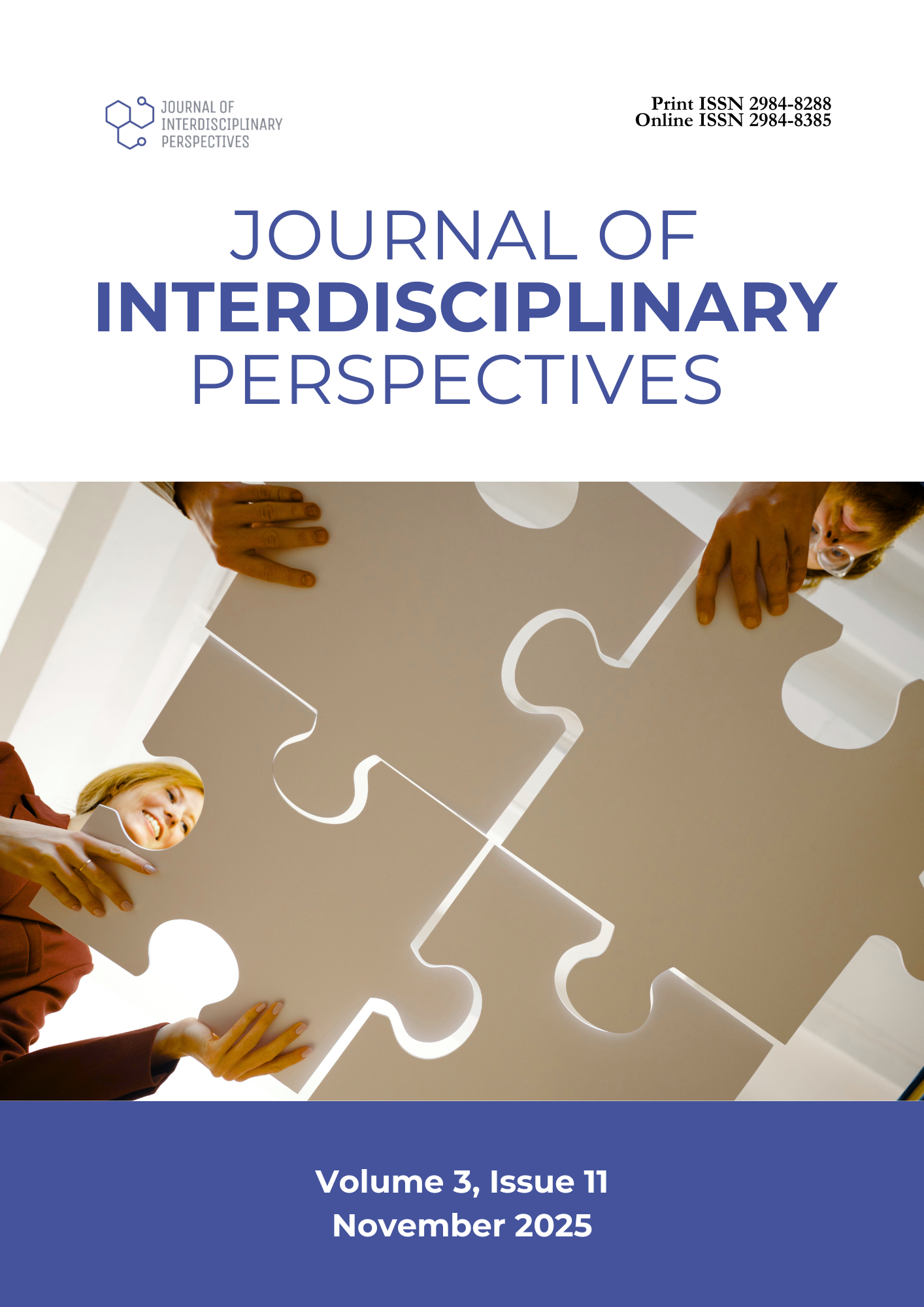The Economics of Artificial Intelligence: A Bibliometric Review
DOI:
https://doi.org/10.69569/jip.2025.666Keywords:
Artificial intelligence, Bibliometric analysis, Human capital, Economics, Sustainability, TechnologyAbstract
Artificial intelligence (AI) has rapidly evolved from a futuristic concept to a robust technology transforming our world. This research explores the economic impacts of AI by analyzing a decade of academic literature from 2015 to 2024. Using a quantitative method called bibliometric analysis, this study maps out the key themes and influential works that have shaped our understanding of AI's economic role. The findings reveal that AI transforms work by reallocating tasks, creating new roles, and complementing human skills rather than just replacing them. Key research areas that have emerged include the importance of building trust in AI systems, utilizing machine learning for improved economic forecasting, and applying AI to address complex societal challenges such as sustainable urban development and supply chain optimization. The study also highlights a growing focus on the ethical dimensions of AI, including fairness and data privacy. This paper concludes that the central question is not whether AI will change our economy, but how we can guide its development. The path forward requires a proactive approach that fosters an environment where AI complements human ingenuity and its benefits are shared widely and equitably across society. This involves creating policies that support lifelong learning, encourage the development of human-centric AI, and ensure that technological progress translates into broad-based prosperity.
Downloads
References
Acemoglu, D., & Autor, D. (2011). Skills, tasks, and technologies: Implications for employment and earnings. Handbook of Labor Economics, 4(Part B), 1043–1171. https://doi.org/10.1016/s0169-7218(11)02410-5
Acemoglu, D., & Azar, P. (2017). Endogenous production networks. SSRN Electronic Journal. https://doi.org/10.2139/ssrn.3083542
Acemoglu, D., & Restrepo, P. (2018). The race between man and machine: Implications of technology for growth, factor shares, and employment. American Economic Review, 108(6), 1488–1542.
Acemoglu, D., & Restrepo, P. (2019). Automation and new tasks: How technology displaces and reinstates labor. Journal of Economic Perspectives, 33(2), 3–30. https://doi.org/10.1257/jep.33.2.3
Acemoglu, D., & Restrepo, P. (2020). Robots and jobs: Evidence from US labor markets. Journal of Political Economy, 128(6), 2188‐2244. https://doi.org/10.1086/705716
Acquisti, A., Brandimarte, L., & Loewenstein, G. (2015). Privacy and human behavior in the age of information. Science, 347(6221), 509–514. https://doi.org/10.1126/science.aaa1465
Adner, R., & Kapoor, R. (2010). Value creation in innovation ecosystems: How the structure of technological interdependence affects firm performance in new technology generations. Strategic Management Journal, 31(3), 306–333. https://doi.org/10.1002/smj.821
Aghion, P., Jones, B., & Jones, C. (2017). Artificial intelligence and economic growth. https://tinyurl.com/2ryf43p5
Ajzen, I. (1991). The theory of planned behavior. Organizational Behavior and Human Decision Processes, 50(2), 179–211. https://doi.org/10.1016/0749-5978(91)90020-T
Alalwan, A. A., Dwivedi, Y. K., & Rana, N. P. (2017). Factors influencing adoption of mobile banking by Jordanian bank customers: Extending UTAUT2 with trust. International Journal of Information Management, 37(3), 99–110.
Aldoseri, A., Khalifa, K. N. A., & Hamouda, A. M. (2024). AI-Powered innovation in digital transformation: Key pillars and industry impact. Sustainability, 16(5), 1790. mdpi. https://www.mdpi.com/2071-1050/16/5/1790
Arntz, M., Gregory, T., & Zierahn, U. (2016). The risk of automation for jobs in OECD countries. OECD Social, Employment and Migration Working Papers, 189(189). https://doi.org/10.1787/5jlz9h56dvq7-en
Arntz, M., Gregory, T., & Zierahn, U. (2017). Revisiting the risk of automation. Economics Letters, 159(159), 157–160. https://doi.org/10.1016/j.econlet.2017.07.001
Arrieta, A. B., Díaz-Rodríguez, N., Del Ser, J., Bennetot, A., Tabik, S., Barbado, A., García, S., Gil-López, S., Molina, D., Benjamins, R., Chatila, R., & Herrera, F. (2020). Explainable artificial intelligence (XAI): Concepts, taxonomies, opportunities, and challenges toward responsible AI. Information Fusion, 58(1), 82–115. https://doi.org/10.1016/j.inffus.2019.12.012
Athey, S., & Imbens, G. W. (2019). Machine learning methods that economists should know about. Annual Review of Economics, 11(1), 685–725. https://doi.org/10.1146/annurev-economics-080217-053433
Autor, D. H. (2015). Why are there still so many jobs? The history and future of workplace automation. Journal of Economic Perspectives, 29(3), 3–30. https://doi.org/10.1257/jep.29.3.3
Autor, D. H., & Dorn, D. (2013). The growth of low-skill service jobs and the polarization of the US labor market. American Economic Review, 103(5), 1553–1597.
Autor, D. H., Levy, F., & Murnane, R. J. (2003). The skill content of recent technological change: An empirical exploration. The Quarterly Journal of Economics, 118(4), 1279–1333.
Chen, T., & Guestrin, C. (2016). XGBoost: A scalable tree boosting system. Proceedings of the 22nd ACM SIGKDD International Conference on Knowledge Discovery and Data Mining - KDD’16, 1(1), 785–794. https://doi.org/10.1145/2939672.2939785
Czarnitzki, D., Fernández, G. P., & Rammer, C. (2023). Artificial intelligence and firm-level productivity. Journal of Economic Behavior & Organization, 211, 188–205. https://doi.org/10.1016/j.jebo.2023.05.008
Gao, X., & Feng, H. (2023). AI-Driven productivity gains: Artificial intelligence and firm productivity. Sustainability, 15(11), 8934–8934. https://doi.org/10.3390/su15118934
Johnson, P. C., Laurell, C., Ots, M., & Sandström, C. (2022). Digital innovation and the effects of artificial intelligence on firms’ research and development – Automation or augmentation, exploration or exploitation? Technological Forecasting and Social Change, 179(179), 121636. https://doi.org/10.1016/j.techfore.2022.121636
Kim, E. (2025). Does publisher volume matter? A cross-sectional analysis of Scopus journal publishing patterns. Publications, 13(2), 17. https://doi.org/10.3390/publications13020017
Krakowski, S. (2025). Human-AI agency in the age of generative AI. Information and Organization, 35(1), 100560. https://doi.org/10.1016/j.infoandorg.2025.100560
Passas, I. (2024). Bibliometric analysis: The main steps. Encyclopedia, 4(2), 1014–1025. https://doi.org/10.3390/encyclopedia4020065
Rashid, A. B., & Kausik, A. K. (2024). AI revolutionizing industries worldwide: A comprehensive overview of its diverse applications. Hybrid Advances, 7(100277), 100277–100277. https://doi.org/10.1016/j.hybadv.2024.100277
Rong, K. (2022). Research agenda for the digital economy: An IBCDE framework. Journal of Digital Economy, 1(1). https://doi.org/10.1016/j.jdec.2022.08.004
Skare, M., Gavurova, B., & Blažević Burić, S. (2024). Artificial intelligence and wealth inequality: A comprehensive empirical exploration of socioeconomic implications. Technology in Society, 79, 102719. https://doi.org/10.1016/j.techsoc.2024.102719
Downloads
Published
How to Cite
Issue
Section
License
Copyright (c) 2025 Journal of Interdisciplinary Perspectives

This work is licensed under a Creative Commons Attribution-NonCommercial 4.0 International License.









